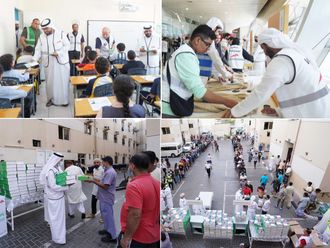Maharashtra has the highest incidence of HIV in India accounting for 50 percent of all HIV/AIDS cases in the country. This is because of various factors as high degrees of labour mobility, specially male migration to urban areas, persistent poverty and endemic hunger that often drive the commercial sex worker (CSW) in the state.
HIV infection has spread rapidly among commercial sex workers (CSWs) and is now being transmitted to low risk population groups. The average time lag is three to five years as the virus spreads from CSWs to their clients who act as the bridge population to the low risk groups such as their wives.
According to the recently released Human Development Report Maharashtra, there is hardly a district - except for Osmanabad and Wardha - in the state without AIDS. Though 13 districts reported cases of AIDS between 1986 and 2001, there were no deaths. What is intriguing is that some of these districts have a fair number of AIDS cases - 116 in Chandrapur, 92 in Akola and 40 in Aurangabad - but even these did not report any AIDS-related deaths. This could be a pointer to a possible poor reporting.
Both by incidence and fatality, Sangli and Mumbai lead with a number of AIDS cases: 2,952 cases out of a total of 6,644 cases across Maharashtra and 200 deaths between August 1986 to February 2001.
Mumbai is a major reservoir but smaller towns like Sangli (2,077 cases and 267 deaths), Kolhapur (314 cases and 113 deaths), Satara (380 cases and 26 deaths) and Pune (375 cases and 53 deaths) throw up a disconcerting picture of the situation. These four districts account for some 47 per cent of the total cases in Maharashtra with Mumbai 44 per cent.
The report states that whatever data is available on the incidence of HIV/AIDS is itself disturbing since it reflects only a tip of the iceberg with most of the data coming from only the public health care system.
The spread of HIV is not a random event but is caused by specific behavioural patterns with strong socio-economic implications. A government-sponsored study indicates that HIV prevalence tends to indicate a positive relationship with poverty ratio, migration, urbanisation and child mortality and unfortunately Maharashtra has a high incidence of all these factors, making it a formidable challenge for the state to fight the spread of this disease.
So far, the entire focus of the National AIDS Control Programme is awareness campaigns and education and surveillance of specific groups of population. For instance, surveillance is done through screening of blood sample from clinics where patients with sexually transmitted diseases (STD) are treated and women seeking antenatal care.
It is felt that anti-HIV programmes should be designed to not only to prevent and reduce the incidence but also develop social security and livelihood intervention for high-risk groups such as the CSWs for many of whom the fear of declining incomes after 'prime age' increases the propensity to maximise clients, even if it involves unprotected sex.
Maharashtra tops in HIV/AIDS cases
Maharashtra has the highest incidence of HIV in India accounting for 50 percent of all HIV/AIDS cases in the country. This is because of various factors as high degrees of labour mobility, specially male migration to urban areas, persistent poverty and endemic hunger that often drive the commercial sex worker (CSW) in the state.











